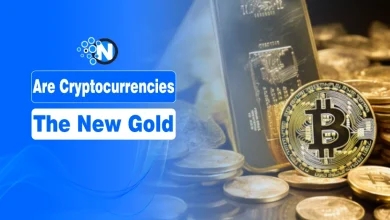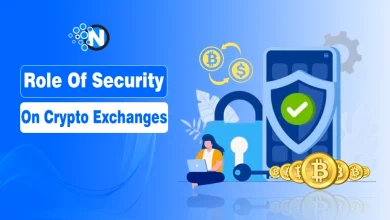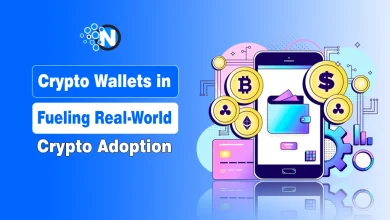Top Solana Ecosystem Tokens to Watch in 2025

Solana is fast, cheap, and supports thousands of transactions per second. That’s why developers love building on it, and why more tokens are launching here. With its high-speed transactions and low fees, Solana remains a hub for decentralized finance (DeFi), gaming, and non-fungible tokens (NFTs). As we move into 2025, several tokens within the Solana ecosystem are gaining traction due to their utility, innovation, and strong market performance.
In this blog post, I will explore the top Solana ecosystem tokens to watch in 2025, along with their fundamentals and recent performance.
Let’s start!
Why These Solana Tokens Matter
Each token in Solana’s ecosystem plays a specific role. Some support DeFi growth, like Jito, Jupiter, and Meteora. Others push NFTs, liquid staking, or cross-chain access. Bonk shows how community-driven tokens can evolve. Wormhole and Pyth focus on infrastructure, solving real problems behind the scenes. And tokens like DRIP and ACS test new models for creators and media.
In 2025, utility matters. These tokens aren’t just hype; they help power one of the fastest-growing blockchains.
If you’re watching Solana, these are worth tracking. Get Solana straight to your wallet and explore the projects shaping its future.
Top Solana Ecosystem Tokens

1. Jito (JTO)

Jito powers liquid staking on Solana. It lets users stake SOL while keeping their tokens usable elsewhere, earning rewards without locking up funds. It also handles MEV (Maximum Extractable Value) more fairly by sharing the extra value with stakers, not just validators. That makes staking more efficient and user-friendly.
Jito is already used by top validators and has strong developer support. As more DeFi projects integrate liquid staking, JTO could play a bigger role in the network’s growth.
2. Jupiter (JUP)

Jupiter is Solana’s top trading aggregator. It scans decentralised exchanges to find the best swap price, saving users time and money. It’s a go-to tool for anyone trading SPL tokens.
Jupiter is expanding beyond swaps into limit orders, perpetuals, and token launches. The JUP token gives holders voting power and access to rewards. With growing volume and features, Jupiter is becoming a key DeFi gateway on Solana.
3. Bonk (BONK)

Bonk started as a meme but has become one of Solana’s most active tokens. It’s widely used across NFT platforms, tip jars, and community tools. It’s also appearing in DeFi apps, helping drive user activity and engagement.
What makes BONK worth watching isn’t just hype; it’s utility. Like DOGE or SHIB, its value comes from community power. And that community is large, creative, and committed. If integrations continue to grow, BONK could evolve into a serious ecosystem token.
4. Pyth Network (PYTH)

Pyth delivers real-time price data from professional trading firms directly onto Solana. That data is essential for DeFi protocols like lending, trading, and derivatives. Without reliable oracles, smart contracts can’t function properly.
PYTH stands out for its accuracy and speed. It’s already used by top Solana DeFi apps and is expanding to other chains. As DeFi grows more complex, the need for trusted on-chain data will only increase, making PYTH a vital building block.
5. Marinade (MNDE)

Marinade is one of the first liquid staking platforms on Solana. It lets users stake SOL and receive mSOL in return, a liquid token that can be used in DeFi while still earning staking rewards. That means users don’t have to choose between securing the network and using their funds.
The MNDE token governs the Marinade protocol. It’s used to vote on decisions like validator selection and reward distribution. Marinade is also building tools to improve decentralization by directing stake toward smaller, independent validators. As liquid staking grows, Marinade is in a strong position to lead.
6. Meteora (formerly Mercurial Finance)

Meteora focuses on dynamic liquidity, helping Solana-based apps manage stablecoins more efficiently. It powers adaptive pools, liquidity pools that adjust based on demand and usage. This helps reduce slippage and boosts returns for liquidity providers.
The project has shifted from static yield farming to more active, efficient liquidity solutions. And it’s gaining attention from DeFi builders looking for smarter tools. If Solana DeFi continues to scale, Meteora could play a big part in managing the liquidity behind it.
7. Tensor (TNSR)

Tensor is a top NFT trading platform on Solana. It’s fast, supports advanced trading tools, and appeals to serious NFT users. Think of it as the “pro” version of an NFT marketplace—built for efficiency.
The TNSR token gives users a role in platform governance and rewards frequent traders. As NFT activity shifts toward Solana due to lower fees, Tensor is well positioned to capture more of the market. It’s already competing with the biggest names in the space, which says a lot.
8. Wormhole (W)

Wormhole connects Solana to other blockchains. It’s a bridge that lets users move assets and data between chains like Ethereum, Avalanche, and BNB Chain. Without it, Solana would be far more isolated.
The W token will govern the protocol, helping decide how fees are handled, upgrades are made, and how the network evolves. Cross-chain tools are becoming essential, and Wormhole is one of the most widely used ones. If multi-chain becomes the norm, Wormhole is already ahead.
9. Drip (DRIP)

Drip is all about social engagement on Solana. It lets creators send digital art, collectibles, and other content directly to wallets. There are no marketplaces, no fees, just airdrops. Simple.
The DRIP token supports this creator economy. It can be used for access, curation, and rewards. Because it taps into Solana’s low fees and fast delivery, it’s ideal for micro-content. As more creators look for blockchain-native tools, Drip stands out as something different, personal, and scalable.
10. Access Protocol (ACS)

Access Protocol changes how people pay for content. Instead of one-time payments or subscriptions, users stake ACS tokens to access media. They stake to read, and they unstake to leave. It’s a fresh take on digital access.
Publishers like crypto news sites are already using it. And it gives them recurring engagement without ads or middlemen. ACS brings real-world utility to Solana by solving a common Web2 problem. That’s worth watching.
Final Words
The Solana ecosystem is still developing, with various currencies supporting DeFi, gaming, and decentralised computing. Whether you’re a developer, investor, or enthusiast, monitoring these tokens can give you essential information about how blockchain technology will develop.




